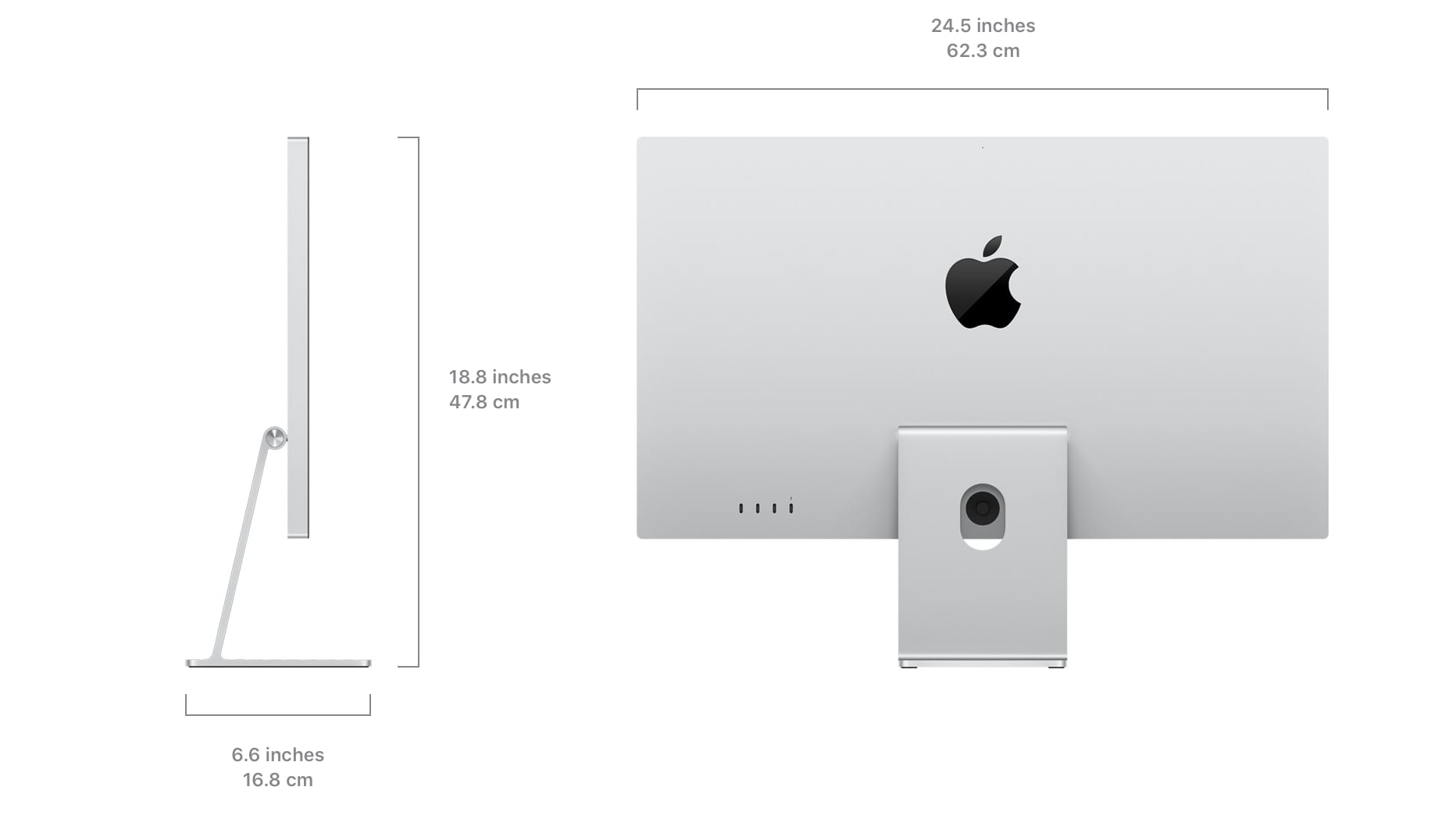
- #APPLE DISPLAY STUDIO ALTERNATIVE MOVIE#
- #APPLE DISPLAY STUDIO ALTERNATIVE FULL#
- #APPLE DISPLAY STUDIO ALTERNATIVE SOFTWARE#
- #APPLE DISPLAY STUDIO ALTERNATIVE MAC#
On a 27" monitor I would argue that is quite likely the resolution you will want to use in terms of font sizing. This still looks pretty darn good, due to HiDPI, even though its not perfect 2:1 scaling, its still filling in some of the curves, its not as perfect but still very acceptable. So.you can compromise and choose the next option provided by Apple, which is 2560x1440. However 1920x1080 is just not enough real estate and you will probably feel the fonts are bigger then they really need to be, no matter how gorgeous it looks at the 2:1 HiDPI scaling. Old school non-HIDPI scaling would simply look terrible. That's why it looks beautiful is because under the covers Apple uses all the in-between pixels to fill in the lines and curves, making it look much nicer.
#APPLE DISPLAY STUDIO ALTERNATIVE FULL#
It is 1/2 the resolution of the full native 4k resolution. Apple is by default scaling your 4k display to the "default" resolution of 1920x1080 using HiDPI technology under the covers. HiDPI is tech I won't belabor to explain now, but both Macs and PC's have it. So in whatever we do, we are trying to balance the requirement of readable font sizes, clear scaling.and getting as much real estate as we can out of whatever sized monitor we have. More windows, see the whole page of a document, etc. The largest I can do, and not for all day, is around 117ppi.Įveryone wants more land.

Younger people may claim they can use slightly smaller fonts, which would mean slightly larger PPI values. Stated simply, an effective scaled resolution that results in 100-110ppi will give you font sizing that you can sit at a computer 2-3 feet away from your eyes for long hours and read all the fonts without strain, and also not so big as to be wasting screen real estate.
#APPLE DISPLAY STUDIO ALTERNATIVE SOFTWARE#
So the OS fonts, the software fonts.when not scalable by the app, will make assumptions that you are using a display around that size. The fonts were arguably slightly larger then perfectly optimal, but the point is, that this size is about what software makers expect you to be using. The classic 30" Apple Cinema Display which many at the time regarded as just "perfect" had a native resolution of 100ppi.

Fonts especially are sized according to that expectation. MacOS and the way software is created all sizes their guis to a sort of standardized sizing of everything and basically in the range of 100-110ppi is the range that software makers are expecting you to be running your monitor. HiDPI scaling as close as possible to the gorgeous 1920x1080 resolution Apple labels as "default" Readable fonts, in the golden range of 100-110ppi typical desktop viewing distance) With HiDPI scaling, which I highly recommend everyone use nearly always, especially on a 27" 4k monitor then you have to juggle and balance a couple of things to find the ideal resolutions to use: You can use a web calculator such as this one to calculate the effective software canvas PPI at various different resolutions:īasically the ideal golden range of PPI values that are about right for working with your eyes around 2-3 feet away from the monitor are going to be in the range of 100-110dpi ( based on the scaled resolution, not the native resolution). Note that that PPI values I calculated above are based on my 32" monitor, they would be different for a smaller 27" monitor. My custom resolutions with my 32" LG monitor look like this: They call them "scaled", but internally they are actually HiDPI scaled resolutions.which is a good thing, but not obvious from the labeling. Apple's default Control panel only provides a few scaled resolutions. I highly recommend this app in order to make full use of HiDPI technology and much more optimal scaling options. I highly recommend SwitchResX as a commercial app for creating and switching between custom resolutions beyond what Apple provides automatically. Regarding custom resolutions.I have a lot to say on this topic.

#APPLE DISPLAY STUDIO ALTERNATIVE MOVIE#
(That's also why, if you see a computer on a movie set, it's gonna be a Mac.) But if you require calibration, you're going to pony up some cash. If you simply need "a nice external monitor that works well with your Mac," that's very easy and not very expensive. Sure, you can get used to anything once you get used to it, but it's not standardized. Color-casts going this way and that, color-depth all over the map. Now, go into a Wal-Mart and look at the PCs.
#APPLE DISPLAY STUDIO ALTERNATIVE MAC#
If you walk into a Mac retail store, one thing that you may not immediately notice is that e-v-e-r-y-t-h-i-n-g in the store. If you're doing final-approval for a magazine cover before a million copies of it are printed, "these things matter." And, if you are doing motion-picture work, or printing-industry "pre-flights," that's exactly what you require and will pay for. Apple's big monitors are calibrated, just like its computer displays are.


 0 kommentar(er)
0 kommentar(er)
